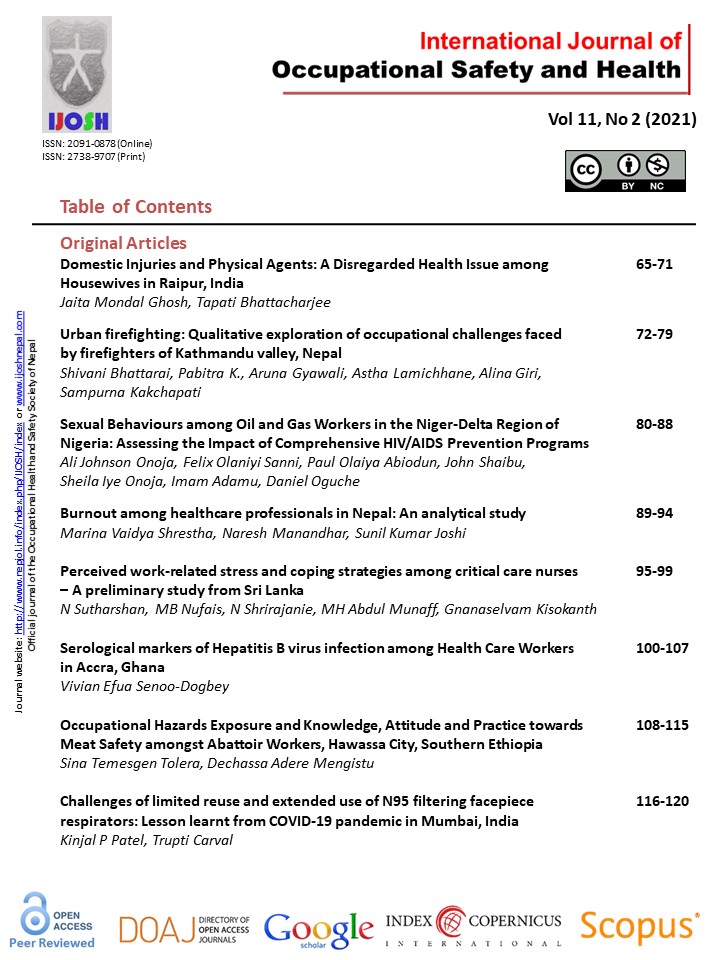Serological markers of Hepatitis B virus infection among Health Care Workers in Accra, Ghana
DOI:
https://doi.org/10.3126/ijosh.v11i2.37105Keywords:
Health Care Worker, Hepatitis B infection, Serological markersAbstract
Introduction: The prevalence of HBV among the Ghanaian population is high and also occupational exposures to blood and body fluids that could potentially result in HBV infection is also high among HCWs. However the distribution of serological markers of HBV infection among Health care workers remains largely unknown. The aim of the study was to describe the distribution of HBV serological markers among the Ghanaian HCWs.
Methods: A hospital based cross sectional survey involving 363 HCWs drawn from five health institutions selected through stratified random sampling procedure was undertaken. A structured pretested questionnaire was the research instrument that was utilized to collect data from health care workers who also gave 5mls of venous blood to be evaluated qualitatively for the presence of five serological markers of HBV. Enzyme Linked Immunosorbent Assay (ELISA) procedure was subsequently undertaken to detect IgM HBcAb. Data were analyzed using SPSS version 20.0.
Results: The predominant HBV maker among the population was Anti-HBs; 57.4% (195/340) and the least was HBeAg; 1.5% (5/340). One third (123/340) of the HCWs were naïve to HBV. Lifetime exposure to HBV (Anti-HBc) prevalence was 8.2% (28/340) (95% CI= 5.0%-11).
Conclusions: Even though Anti-HBs is the predominant antibody marker identified among the population of HCWs evaluated, one third of the participants still remain susceptible to HBV infection. Protective measures need to be instituted to prevent new infections among HCWs who are currently naïve to the virus. Sanitary workers or orderlies need to be given special consideration in HBV prevention campaigns.
Downloads
Downloads
Published
How to Cite
Issue
Section
License
This license enables reusers to distribute, remix, adapt, and build upon the material in any medium or format for noncommercial purposes only, and only so long as attribution is given to the creator.





